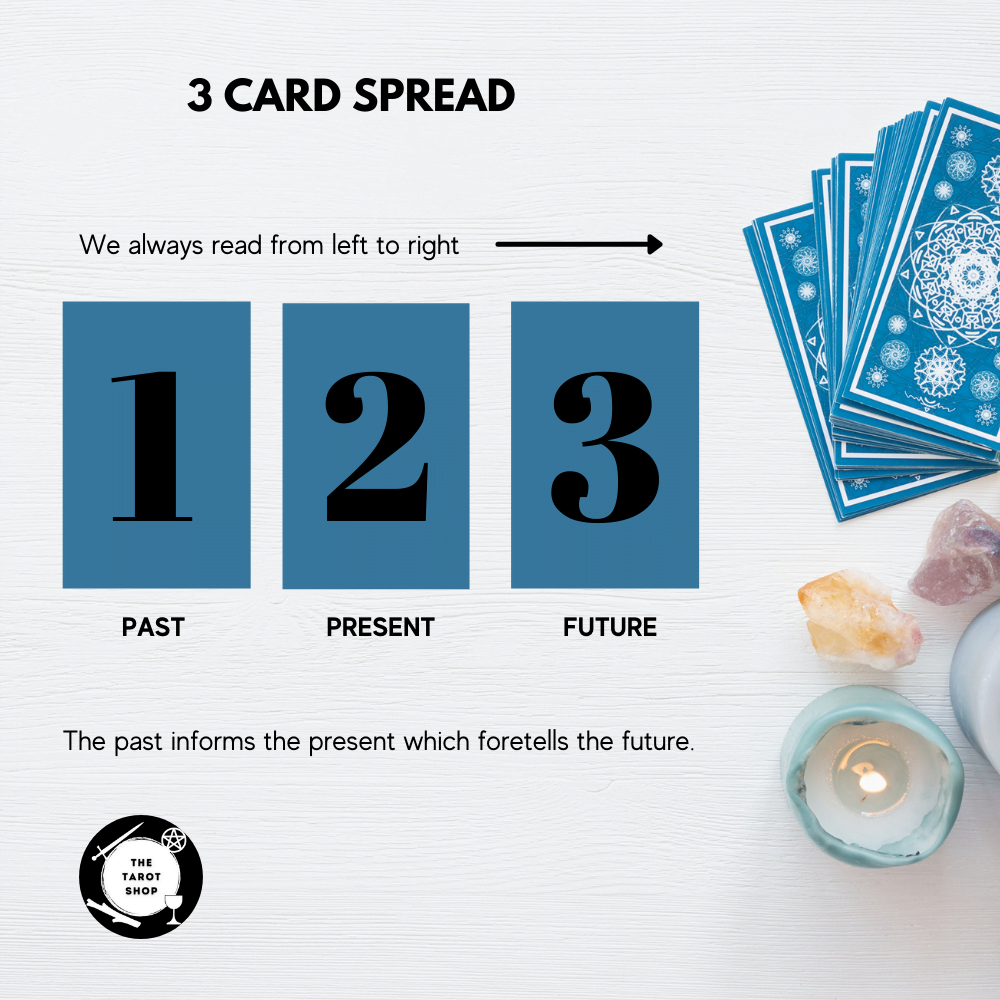Easy Tarot for Beginners: The 3-Card Spread
When you’re first starting out with tarot, it can feel like there’s a mountain to climb. There are 78 cards to learn, dozens of possible spreads, and all those meanings to remember. But here’s the good news: you really don’t need to learn everything at once. In fact, many professional readers — myself included — still use just one simple, tried-and-tested layout on a regular basis. It’s called the three-card spread.
This spread is one of the easiest ways to begin reading tarot, and it’s incredibly effective. Whether you’re pulling cards for yourself, a friend, or even a client down the line, this layout offers clear, quick insight without overwhelm. So, if you’re wondering where to begin, start here.
What Is a 3-Card Spread, and Why Use It?
As the name suggests, this spread uses just three cards, laid side by side. You can use it for almost anything — love, work, daily guidance, decision-making — and it adapts beautifully to your question. That’s what makes it such a powerful tool, especially when you’re still getting to know your deck.
Even better? It helps you practise something vital: reading the cards in relation to each other. Rather than focusing on just one meaning at a time, you’ll start to see how the energy flows from card to card — like a mini story unfolding in front of you.
Choose a Framework Before You Shuffle
To get the most from your three cards, it helps to decide in advance what each position will represent. Two of the most popular layouts are:
Past / Present / Future — a classic overview of what’s led to the situation, where things currently stand, and where it may be heading.
Situation / Challenge / Future — a great option if you’re dealing with a specific issue and want clarity on what’s going on, what’s in the way, and what the outcome might look like.
Pick the one that fits your question best and trust your instincts — both options work well.
Step-by-Step: How to Do the Reading
Start by forming a clear question. Something like “What energy is around this decision?” or “What do I need to understand about this relationship?” Keep it open enough for the cards to speak, but clear enough that you stay focused.
Then:
Shuffle the cards with your question in mind.
When you feel ready, cut the deck into two piles using your left hand and place the bottom half on top.
Take the top three cards and lay them out left to right.
Some readers turn all three face-up at once. Others (like me) prefer to keep them face-down and reveal one at a time. There’s no rule here — do what feels most natural to you.
Reading the Spread: What to Look For
Once the cards are laid out, start noticing patterns. Are there two or more cards from the same suit?
Two or more Cups suggest a strong emotional focus — often love, connection, or heartfelt decisions.
Several Swords could point to stress, tension, or mental overwhelm — so tread gently.
Multiple Wands bring a message of energy, action, or work-related themes.
A cluster of Pentacles usually points to money, security, or the physical world.
Now glance for Major Arcana. These cards tend to highlight deeper life lessons or personal growth. If two or more appear together, it’s often a sign that this moment is especially significant.
A Quick Example
Say you ask, “What do I need to know about this new relationship?”
You draw:
The Lovers — A strong connection, potentially romantic or soul-level.
The Moon — Something is unclear or still hidden.
Two of Cups — There’s mutual care and potential for true partnership.
Together, the cards suggest a real emotional bond, but one that needs time and clarity. Trust your intuition before rushing ahead.
How to Add A Clarifier Card
If one of your three cards feels confusing or you’re not sure how to tie the story together, you can pull a clarifier. This is simply an extra card you draw to bring more depth or explanation to a single position. Just one is usually enough — any more, and the spread can start to lose focus.
Clarifiers are useful when the message feels vague or when two cards seem to contradict each other and you need a little more insight.
My Final Thoughts
The three-card spread is the perfect place to begin if you’re new to tarot — and honestly, it may stay one of your favourites for years to come. It teaches you how to build meaning, recognise patterns, and read the story in front of you. It’s also fast, flexible, and works for almost any situation.
As always, the key is to stay present, ask clear questions, and practise. Tarot isn’t about memorising meanings — it’s about listening and connecting.
And when you’re ready to try something more layered, you can head over to the Celtic Cross guide for your next step.

